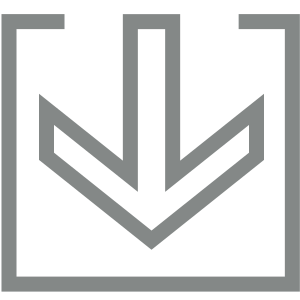MAIN RISK FACTORS AND MITIGATING MEASURES
HELLENIC PETROLEUM examines and evaluates all possible risks and prepares procedures in order to ensure for the Group’s continuous and smooth operation
The Group is exposed to a variety of macroeconomic (foreign exchange, crude oil price, refining margins), financial (capital structure, liquidity, cash flow, credit), as well as operational risks. In line with international best practices and within the context of the local markets and regulatory framework, the Group’s overall risk management policies aim at reducing possible exposure to market volatility and / or mitigating any adverse effects on the Group’s financial position to the extent possible. The recent coronavirus pandemic makes the risk management framework particularly important. The main risks faced by the Group, as well as the corresponding mitigating measures, are described below:
| Main risks | Indicative mitigating measures |
|---|---|
| Macroeconomic environment | |
Crude oil and products market:
|
|
Global Economy:
|
|
Foreign exchange risk:
|
|
Greek economy:
|
|
| Financial risks | |
| Capital structure |
|
| Liquidity |
|
| Credit |
|
| Operation risks | |
| Safety & Environment |
|
| Ensure refineries’ supply with raw materials |
|
| Reduced operation or unplanned shut-down of a refinery |
|
| Compliance with the CO2 regulatory framework |
|
| Compliance in terms of operation and product quality |
|
| Property and liability risk |
|
and Risk Management
In the same context, the Group’s Internal Audit System and Risk Management include safeguards and monitoring mechanisms at various levels within the organization, as described below:
The identification and assessment of risks takes place mainly during the strategic planning and the annual preparation of the business plan. The benefits and opportunities are examined in the context of the company’s activities, but also in relation to several different stakeholders who may be affected.
The Company’s performance is monitored through a detailed budget per operating sector and market. The budget is adjusted systematically, and Management monitors the development of the Group’s financial performance through regularly issued reports and budget comparisons with the actual results.
The Internal Control System consists of the policies, procedures and tasks which have been designed and implemented by the Management Team for the purpose of the effective management of risks, the achievement of business objectives, the reliability of financial and administrative information and compliance with laws and regulations.
The Independent Internal Audit Department, by means of periodic assessments, ensures that the identification procedures and risk management applied by Management are sufficient, that the Internal Control System operates effectively, and that information provided to the BoD relating to the Internal Control System, is reliable and of good quality.
The role and responsibilities of the BoD are described in the Company’s Internal Procedures Manual, which is approved by the BoD.
of financial fraud
The areas that are considered to be of high risk for financial fraud are monitored through appropriate internal controls and enhanced security measures. In addition to the internal controls applied by each department, all Company activities are subject to audits from the Internal Audit Department, the results of which are presented to the BoD.
The Company has compiled relevant internal regulations approved by the BoD. The Regulations determine powers and responsibilities, which promote the adequate segregation of duties within the Company.
In the context of the fundamental obligation of good corporate governance, ever since 2011, the Company has drafted and adopted the Code of Conduct, approved by the BoD. The Code of Conduct summarizes the principles according to which any person, employee or third party involved in the operation of the Group, as well as any collective body, should act within the framework of their duties. For this reason, the Code constitutes a practical guide of the day-to-day tasks of all Group employees as well as third parties who cooperate with it.
Technology Systems
The Group’s IT & Digital Transformation Department is responsible for developing the IT strategy and for staff training to cover any arising needs. It is also responsible for the support of IT systems and applications through the drafting and updating of operation manuals, in cooperation with external consultants where necessary. The Company has developed an adequate framework to monitor and control its IT systems, defined by a set of internal controls, policies and procedures.
Financial Reporting
The Group applies common policies and monitoring procedures of accounting departments of the Group’s subsidiaries, which include, amongst others, definitions, accounting principles adopted by the Company and its subsidiaries, guidelines for the preparation of financial statements and consolidation. Furthermore, it also runs automatic checks and validations between different transactional and reporting systems. In cases of nonrecurring transactions, special approval is required.
The Group has in place a chart of authorities, which depicts assigned authorities to various Company executives, in order to complete certain transactions or actions (e.g. payments, receipts, contracts, etc.).
The Company prioritises the safety of its employees and contractors and aims to ensure for the smooth operation of its activities and market supply
The Group immediately responded to the outbreak of the pandemic and since the end of February has taken various initiatives, primarily focusing on ensuring the health and safety of its employees and all of its stakeholders, as well as the smooth operation of its activities and uninterrupted supply of markets.
These initiatives include:
- Adopting a timely and successful new remote working model (teleworking) where possible, remotely supporting information systems and modifying shift programs.
- Utilizing digital technology and upgrading teleworking infrastructures.
- Drafting a Policy addressing how to prevent and manage issues arising from the Covid-19 pandemic, including detailed prevention guidelines and testing response under various scenarios, planning for and implementing procedures for handling any suspected Covid 19 cases.
- Continuously keeping employees up to date, along with ongoing health support (medical network, psychological support line).
- Regular disinfection in all workplaces and appropriate disposal of personal protection equipment (PPE).







